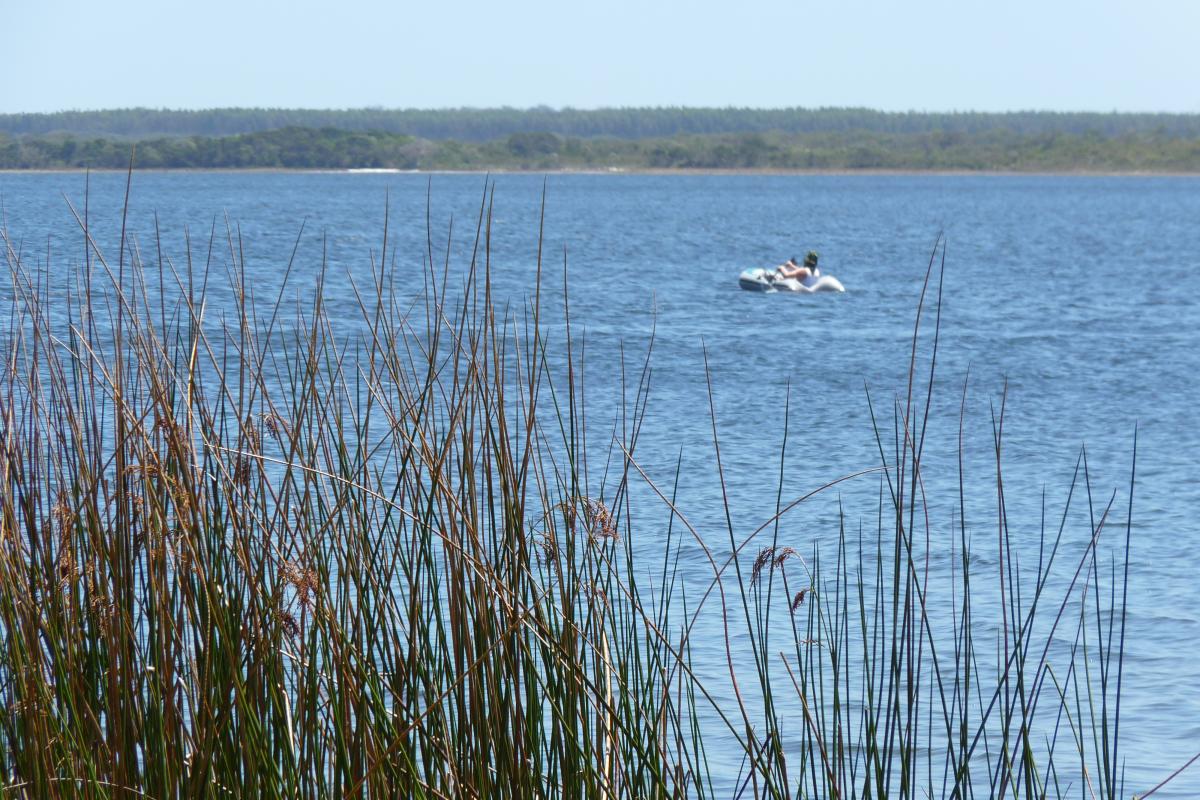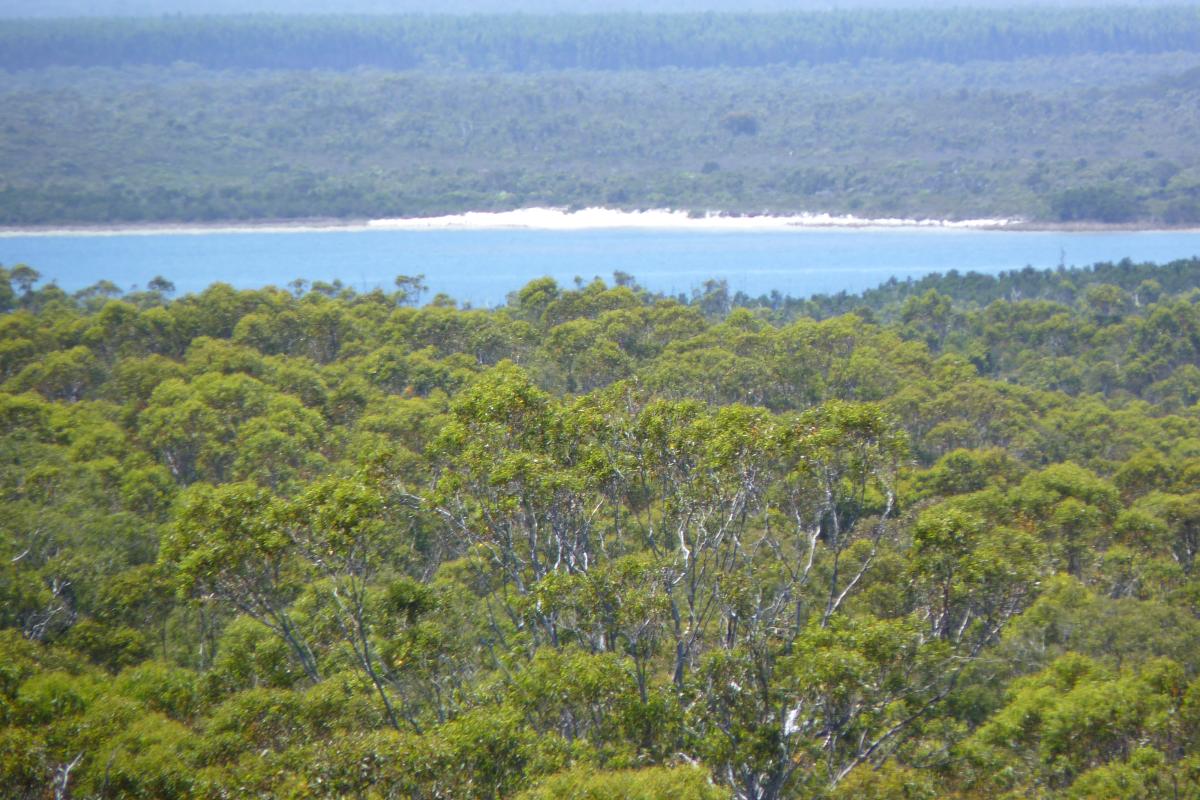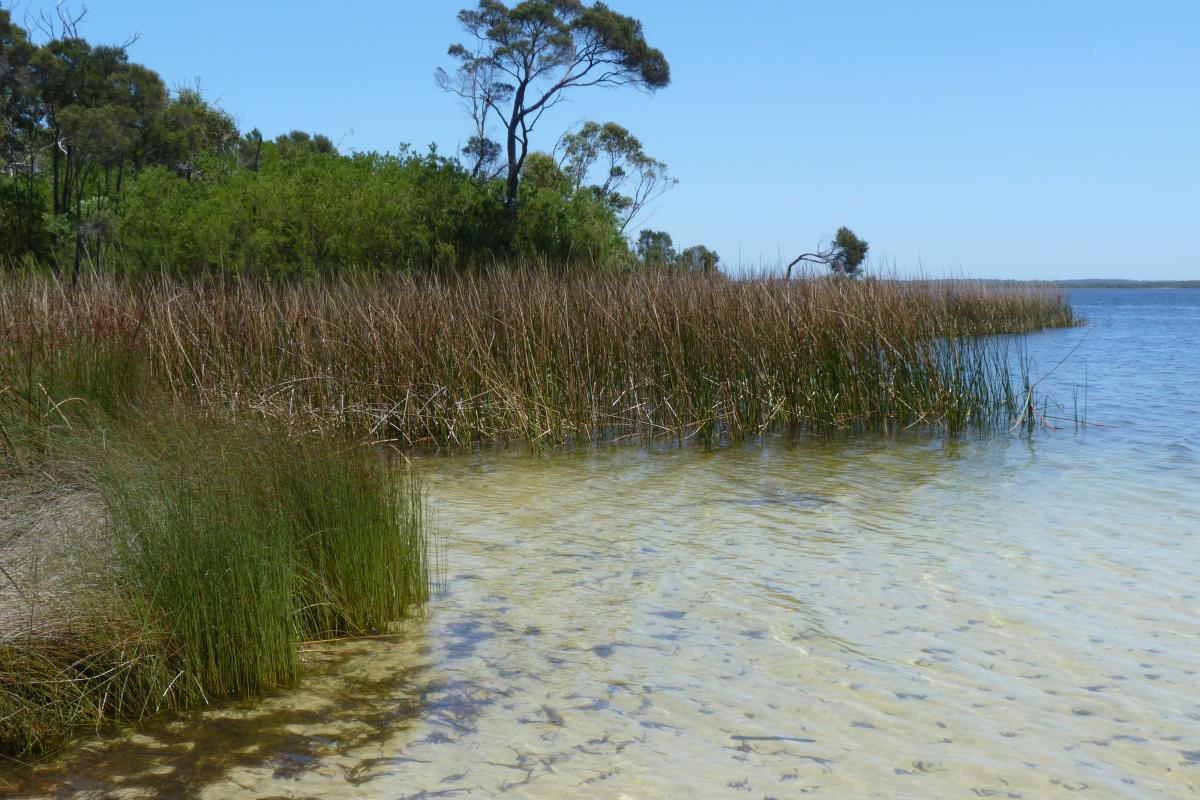About this campground
Lake Jasper (Yoondaddup) is a very small campground with beach access to the lake for swimming and kayaking. It is accessible by high-clearance 4WD vehicle only.
Booking
Bookings are essential and can be made:
- online only
- for one campsite only that you must camp on yourself
- up to and including the day of arrival (subject to campsite availability and your own internet service* to make a booking)
- up to 180 days (approximately six months) before arrival
*Check your mobile service provider’s coverage map but beware that the quality and reliability of service in regional and remote Australia can be variable and is impacted by the forests and hills of Australia’s South West.
Friends, family or other social groups travelling together who cannot be accommodated on the same campsite must make their own separate bookings.
If you are an outdoor education provider, licensed commercial tour operator or are organising an event (friends, family and other social groups camping together does not constitute an event), contact Parks and Wildlife Service Donnelly District Office (Pemberton) to discuss your requirements.
Campsites
Three campsites with a sand surface.
All campsites have a private-use picnic table.
All campsites are unpowered.
Check campsite details and the campground map carefully when booking.
Facilities
No-flush pit toilet.
Communal-use picnic shelter.
The use of the campground facilities is shared with day visitors to Lake Jasper (Yoondaddup).
Campground Rules
No campfires at any time.
No dogs or other domestic animals.
No camping in the parking area.
Generator use is permitted 9am-7pm only.
Do not empty portable toilet waste into campground toilets. Carry waste out of the park for disposal in an authorised dump point.
Carry all waste out of the park. No bins provided.
Fees
A per person camping fee applies. There is a park entry fee for D'Entrecasteaux National Park.
Camping fee must be paid by Mastercard or VISA when booking.
Park entry fee may be paid when booking or by purchasing a park pass and is required for motor vehicles only. Payment is not required for trailers, including camper trailers.
No booking fee.
A fee may apply if you cancel or remove dates from a booking.
Safety information
Plan when to visit. Consider traveling with a personal location beacon (PLB). In the event you need to be rescued it could save your life!
- Drinking water is not provided.
- No-flush pit toilets are the only personal hygiene facility.
- December to April can be extremely hot and the risk of bushfire can be very high.
- Nights can be cold from June to September.
- Storms are common between May and October throughout WA.
- Ensure you have sufficient supplies (including water, food, fuel, medication and first aid), and equipment and clothing appropriate for the conditions before travelling.
- Be prepared for an emergency. For alerts, warnings and advice go to: Emergency WA.
Western Shield - The Department of Biodiversity, Conservation and Attractions undertakes 1080 baiting at this location to reduce the impacts of feral cats and foxes on native wildlife.
Meat baits containing 1080 poison are laid in or around this area on an ongoing basis. 1080 is poisonous to humans and will kill domestic cats and dogs. Pets are not permitted in this park.
For further information contact your local Parks and Wildlife Service office or visit Western Shield.
Gallery



Activities
 Bird watching
Bird watching
 Bushwalking
Bushwalking
 Camping
Camping
 Canoeing and kayaking
Canoeing and kayaking
 Swimming
Swimming
Plants, wildlife and fungi
Visit the Atlas of Living Australia for a list of species recorded within a 5km radius of Lake Jasper (Yoondaddup) Campground.
Traditional Owners
We recognise and acknowledge Minang and Bibbulman people as the traditional owners of D'Entrecasteaux National Park.
There is evidence that Noongar people have lived in South-West Australia for over 47,000 years. The oldest archeological evidence at D’Entrecasteaux is dated at 6000 years, although this does not mean it wasn’t occupied early than this. Erosion of sand dunes within the park has revealed numerous stone artifacts, fish traps, quarry sites, mythological and burial sites. The majority of these are located around the Lake Jasper/ Meerup Dunes area, an area of particular archeological and cultural significance to the Noongar people. Artifacts have been found 10 metres below Lake Jasper’s current water levels, indicating a number of major campsites existed here when the lake was a prehistoric forest.
Wandjoo ngaalang kwoba/moorditj boodjar,
Nyoondool djinang ngaalang kwobidak Wardan, balyoongar, bilya, worl wer djinda kada werda ngaalang miya,
Ngaalang koort kalyakoorl nidja.
Welcome to our good/strong country,
You will see our beautiful sea, sand, rivers, sky, and stars across our place,
Our heart always here.